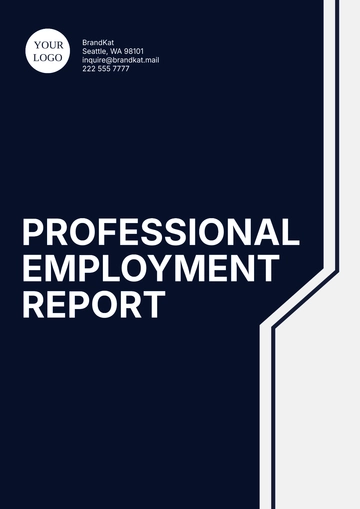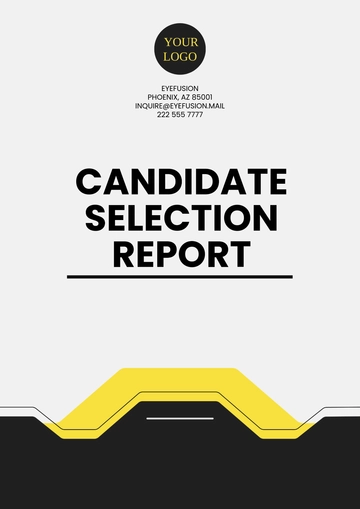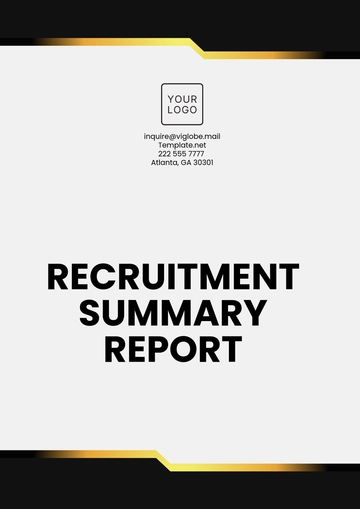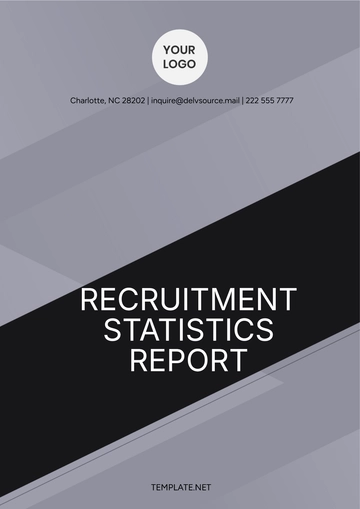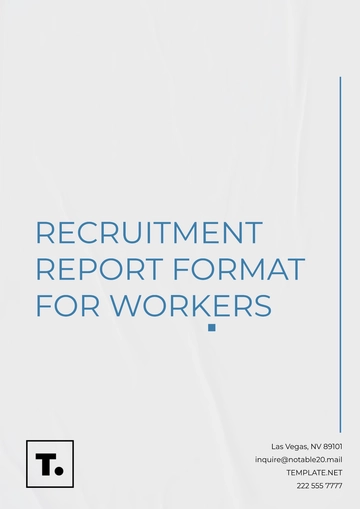Workforce Recruitment Report
1. Introduction
This Workforce Recruitment Report aims to provide a comprehensive analysis of current recruitment practices, analyze challenges faced by the organization, and suggest strategies for improving the recruitment process. The report is essential for understanding the dynamics of the labor market and ensuring the organization attracts and retains the most qualified individuals.
2. Current Recruitment Practices
2.1 Recruitment Channels
The organization employs a variety of recruitment channels to attract talent. These channels include online job portals, recruitment agencies, campus recruitment, social media, and employee referrals.
Online Job Portals: Platforms like Indeed, LinkedIn, and Glassdoor.
Recruitment Agencies: Collaborations with professional recruitment firms.
Campus Recruitment: Partnerships with universities for entry-level positions.
Social Media: Utilize platforms like Facebook, Twitter, and Instagram.
Employee Referrals: Incentivized referral programs for current employees.
2.2 Selection Process
The selection process typically involves multiple stages designed to ensure only the most qualified applicants advance. Common stages include:
Initial Resume Screening: Filtering applications based on minimum criteria.
Interviews: Conducted in stages, including preliminary phone interviews, technical interviews, and final panel interviews.
Assessment Tests: Role-specific tests to evaluate candidates' skills and competencies.
Background Checks: Verification of education, work history, and references.
3. Challenges in Workforce Recruitment
3.1 Labor Market Conditions
Recruitment is often impacted by broader labor market conditions, including economic fluctuations, skill shortages, and changing workforce demographics.
3.2 Organizational Constraints
Internal factors such as budget limitations, resource allocation, and stringent hiring criteria can pose challenges to effective recruitment.
3.3 Technological Advancements
Rapid technological advancements necessitate recruiting candidates with emerging skills, which can be tough due to limited availability of skilled talent.
3.4 Competition for Talent
Organizations face competition from other companies in the industry as well as from startups, which can offer competitive packages and modern work environments.
4. Strategies for Improvement
4.1 Enhancing Employer Branding
Strengthening the organization’s brand can attract potential candidates by highlighting work culture, values, and career development opportunities.
4.2 Expanding Recruitment Channels
Diversifying recruitment channels can reach wider audiences and tap into varied talent pools, such as underrepresented groups and freelancers.
4.3 Leveraging Technology
Utilizing data analytics and recruitment software can streamline recruitment processes, enhance candidate experience, and improve decision-making.
4.4 Investing in Training and Development
Internally developing employees’ skills can reduce dependency on external recruitment and help build a more skilled workforce.
5. Data Analysis
The following table provides a summary of recent recruitment statistics.
Metric | Q1 2051 | Q2 2052 | Q3 2053 |
|---|
Total Applicants | 1,250 | 1,320 | 1,370 |
Interviews Conducted | 320 | 350 | 300 |
Offers Made | 50 | 65 | 60 |
6. Conclusion
This Workforce Recruitment Report highlights the organization's current recruitment practices, challenges faced, and potential strategies for improvement. Addressing the outlined challenges and leveraging innovative strategies will help position the organization for success in attracting and retaining top talent.
7. Recommendations
Enhance digital presence to improve employer branding.
Utilize advanced recruitment tools for better candidate matching.
Develop partnerships with educational institutions for consistent talent pipelines.
Focus on diversity and inclusion initiatives to broaden the talent pool.
Report Templates @ Template.net





